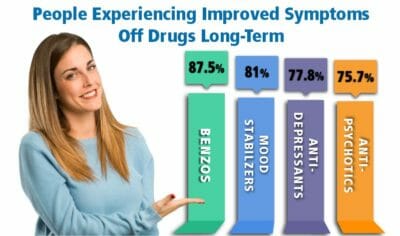Methadone Uses and Risks
Methadone first saw widespread use as a painkiller during World War II when morphine supplies ran low. Methadone could replace medical morphine at a much lower cost, and eventually, the Food and Drug Administration (FDA) recognized its value not only as a pain reliever but as a treatment for opioid addiction. Methadone is a common treatment measure for patients struggling with certain types of chronic pain or undergoing surgery.
Deaths have occurred with methadone use and physicians are cautioned about the possibility of overdose leading to respiratory failure and other consequences. The drug is long-acting, which presents the risk of building up (re-dosing) too quickly, to toxic levels.4,5,6
The most common use of methadone is as an opioid replacement. An individual addicted to heroin or prescription opioid painkillers are at risk of a wide range of unpleasant and even dangerous side effects. Methadone offers an easier transition away from more harmful opioids; however, it does carry a risk of abuse and addiction. There are alternative approaches to using medication to treat addiction to opiates.
What Is Methadone?
Methadone is a synthetic opioid that acts as an agonist. An opioid agonist essentially blocks the opioid receptors in the brain without causing the typical euphoria and psychoactive effects as does heroin or other opioids. It is a long-acting drug that functions as an opioid replacement without significant intoxicating effects. It comes in a drinkable liquid form, dissolvable tablet form, (Diskets) and an injectable form.4,5,6
Methadone in Addiction Treatment and Medicine
When an individual with an opioid addiction stops taking opioids like heroin or fentanyl, the withdrawal symptoms can be unbearable or even life-threatening. Methadone helps these individuals more easily manage their withdrawal symptoms and maintain sobriety more easily. It also functions as a treatment for some types of chronic pain but does not carry the same risk of addiction as other opioids.
Use in Tapering Opiates
When a doctor recognizes that a patient needs opioid replacement therapy, he or she may prescribe methadone as a form of maintenance therapy until the patient is ready for a full detox. Methadone generally exists in liquid, pill, or dissolvable tablet forms. A patient follows a methadone prescription’s instructions in an effort to gradually wean off the drug. Many community assistance programs and substance abuse clinics offer methadone free of charge as a harm reduction measure. These programs also aim to reduce crime related to procuring drugs. Unfortunately, many people will simply take the free methadone and sell it on the street to procure their preferred drugs.
Opioid Withdrawal Symptoms
Opioid addiction escalates very rapidly because the drug causes a user to develop a tolerance in a short amount of time. After abusing opioids for a while, the user will eventually need larger and larger doses to achieve the desired effects. This inevitably increases the risk of an overdose, as an individual in need of a stronger dose of opioids may use more than usual, and there is no way to tell the strength of opioids purchased on the street or identify what other substances a dealer may have added to them. Once tolerance develops, the individual will feel withdrawal symptoms more acutely.
Symptoms of Opiate Withdrawals:
- Intense cravings for more opioids
- Irregular heart rate
- Fever and sweating
- Nausea, vomiting, and stomach cramps
- Irritability, confusion, and unpredictable mood swings
- Symptoms of depression and anxiety
- Seizures
Without immediate treatment, opioid withdrawal can sometimes turn fatal. Methadone functions as a maintenance treatment that prevents the onset of withdrawal symptoms without causing the euphoric effects that amplify addiction. Methadone is used to stop the harsh reactions of stopping opiates, which helps overcome the compulsion to continue addictive behaviors.
How Does Opiate Replacement Therapy Work?
Methadone effectively alters the way the brain responds to pain. It blocks opioid receptors in the brain, preventing the individual from feeling the euphoric effects of other opioids like heroin while offering relief from opioid withdrawal symptoms. It is important to note that methadone is not a self-contained opioid addiction treatment; it should be part of a comprehensive system of treatment that addresses an individual’s unique needs. Methadone can reduce the physical drive of opiate addiction, especially at the beginning of addiction treatment where the cravings can be hard to overcome.
Since methadone carries the potential for abuse, patients may only receive a prescription for methadone maintenance therapy from a prescribing doctor and generally receive their doses under supervision. Once a patient has proven consistently responsible use of the drug, the prescribing doctor may allow the patient to take the medication at home between office visits. In the U.S., the law requires any methadone prescription to come through an officially recognized opioid treatment program certified by the Substance Abuse and Mental Health Services Administration.
Methadone Withdrawal Symptoms and Side Effects
While methadone can be an effective initial treatment for opioid addiction, it does carry its own risk of addiction dependence as it is also an opioid. Methadone generally does not cause extreme levels of euphoria as do other opioids. But individuals who abuse methadone by snorting crushed pills or melting and injecting it directly, are doing so to experience more intense effects. Methadone is a generally reliable form of opioid replacement therapy, but it demands responsible use.
Methadone maintenance therapy is not without side effects, either. In addition to a risk of addiction or replacing one addiction with another, those who take methadone also commonly report several side effects.
Common Side Effects of Methadone:
- Changes in appetite, cravings for sweets
- Sexual dysfunction*
- Constipation
- Nausea, vomiting
- Abdominal pains
- Sleepiness
- Edema in various parts of the body, swelling, gastric issues
- Urinary retention, dark urine
- Potential impairment of memory, learning capacity**
* Participants in an addiction treatment study reported over half of the male clients experienced moderate to severe erectile dysfunction.1
** A Norwegian study done on rats found a 70% decrease in brain function after being given daily Methadone for 3 weeks.2
Safety Issues
Methadone is a reliable treatment for chronic pain and opioid withdrawal, but it demands appropriate use. Any patient who starts to experience diminished efficacy or withdrawal symptoms between methadone doses must report these issues immediately to their prescribing physician. Patients who rely on methadone for pain relief generally do not experience addiction or withdrawal when they follow their prescription directions properly. However, their pain symptoms may worsen over time, reducing the efficacy of their methadone prescription and encouraging inappropriate use.
Doctors also prescribe a specific dosage amount per patient. One patient’s dose could be significantly higher than another patient’s dose, so sharing the drug is very dangerous. Patients should never take additional methadone after a dose wears off because the active ingredients remain in his or her system long after the initial effects subside. This can lead to an unintentional overdose or increase the risk of addiction.
Serotonin Syndrome, which can be fatal, is another potential risk that is warned about on the prescribing information issued by the FDA.
Pregnant women who take methadone usually do not have to worry about it resulting in birth defects, but the baby may develop neonatal abstinence syndrome and require treatment at birth. The FDA warns that the effects on the newborn experiencing opiate withdrawals can be FATAL.
Methadone treatment may continue for several months or even several years depending on the patient’s condition. Some people suffering from chronic pain experience adequate relief from consistent methadone treatment. But there is a caveat here. They inevitably face a risk of developing a tolerance, experiencing diminished relief from their pain, and feeling tempted to take more than prescribed or use an unapproved delivery method for more potent results.
Methadone and Drug/Alcohol Interactions
A prescribing doctor must ensure no dangerous interactions with a patient’s existing prescriptions and advise whether there are any potentially dangerous interactions with other drugs, other prescribed medications, and even when taking over-the-counter medications. The FDA has issued warnings concerning the occurrence of death when Methadone is used concurrently with benzodiazepines or any agent acting as a CNS depressant.3,4,5,6
Methadone can also interfere with the ability to safely operate a vehicle or heavy machinery. Anyone taking methadone on a consistent basis should refrain from consuming alcohol, even in small amounts. The combination of opioids and alcohol can lead to acute respiratory depression, a fatal condition responsible for the majority of opioid overdoses.
Alternatives to Methadone-Based Treatment
Although these treatments can be a valuable addition to any opioid addiction treatment plan, it is not a long-term solution. Those that benefit generally report the best results when they use methadone to transition from opioids to sobriety through a drug rehab program. Some methadone clinics and community support centers offering low-cost or free treatment to people struggling with addiction enforce strict taper-down policies, requiring patients to receive increasingly smaller doses over time.
Unfortunately, tapering is not a requirement in many addiction treatment clinics and community treatment centers. Some people essentially replace addiction to one opioid with addiction to another, requiring consistent doses to avoid the associated withdrawal symptoms.
Treatment Beyond Opiate Replacement Therapy
One of the most difficult aspects of opioid addiction treatment is many patients’ fears of withdrawal; they have heard the stories or seen others go through opioid withdrawal and they want to avoid the experience at all costs. Methadone can potentially aid the detox process. But anyone who wants to recover from opioid addiction can learn about the addictive properties of methadone and how to avoid replacing one addiction with another.
People struggling with addiction who use an opiate replacement as a transitional treatment from other opioid addiction to detox generally report positive results. It can be the catalyst that encourages an individual with an opioid addiction to take charge of his or her situation and seek professional help. As long as he or she uses methadone responsibly and enters a comprehensive treatment program, methadone can be a valuable element of the recovery experience.
Ultimately, any opioid and carries a significant risk of abuse and addiction, but when used correctly and responsibly it can offer relief from the serious withdrawal symptoms that accompany opioid addiction. Anyone considering opioid replacement as a treatment for an ongoing opioid addiction can consider methadone a temporary treatment that paves the way to detox and rehab. Alternative to Meds Center can help by providing the opportunity to begin to understand more about what Methadone is and the uses and risks and begin to successfully transition to a drug-free approach to treating addiction.
Find Out More about Methadone and How to Gently Taper Towards Drug-Free Living









